DeWalt DW913 Handleiding
Bekijk gratis de handleiding van DeWalt DW913 (6 pagina’s), behorend tot de categorie Zaklamp. Deze gids werd als nuttig beoordeeld door 70 mensen en kreeg gemiddeld 3.6 sterren uit 35.5 reviews. Heb je een vraag over DeWalt DW913 of wil je andere gebruikers van dit product iets vragen? Stel een vraag
Pagina 1/6

IF YOU HAVE ANY QUESTIONS OR COMMENTS ABOUT THIS OR ANY DEWALT TOOL,
CALL US TOLL FREE AT: 1-800-4-DEWALT (1-800-433-9258)
General Safety Rules – For All Battery Operated Tools
WARNING! Read and understand all instructions. Failure to follow all instructions
listed below may result in electric shock, fire and/or serious personal injury.
SAVE THESE INSTRUCTIONS
WORK AREA
•Keep your work area clean and well lit. Cluttered benches and dark areas invite acci-
dents.
•Do not operate power tools in explosive atmospheres, such as in the presence of
flammable liquids, gases, or dust. Power tools create sparks which may ignite the dust
or fumes.
•Keep bystanders, children, and visitors away while operating a power tool.
Distractions can cause you to lose control.
ELECTRICAL SAFETY
•Do not abuse the cord. Never use the cord to carry the tool. Keep cord away from
heat, oil, sharp edges or moving parts. Replace damaged cords immediately.
Damaged cords may create a fire.
•A battery operated tool with integral batteries or a separate battery pack must be
recharged only with the specified charger for the battery. A charger that may be suit-
able for one type of battery may create a risk of fire when used with another battery.
•Use battery operated tool only with the specifically designed battery pack. Use of any
other batteries may create a risk of fire.
PERSONAL SAFETY
•Stay alert, watch what you are doing and use common sense when operating a
power tool. Do not use tool while tired or under the influence of drugs, alcohol, or
medication. A moment of inattention while operating power tools may result in serious per-
sonal injury,
•Dress properly. Do not wear loose clothing or jewelry. Contain long hair. Keep your
hair, clothing, and gloves away from moving parts. Loose clothing, jewelry, or long hair
can be caught in moving parts. Air vents often cover moving parts and should also be
avoided.
•Avoid accidental starting. Be sure switch is in the locked or off position before
inserting battery pack. Carrying tools with your finger on the switch or inserting the bat-
tery pack into a tool with the switch on invites accidents.
•Remove adjusting keys or wrenches before turning the tool on. A wrench or key that
is left attached to a rotating part of the tool may result in personal injury.
•Do not overreach. Keep proper footing and balance at all times. Proper footing and bal-
ance enables better control of the tool in unexpected situations.
•Use safety equipment. Always wear eye protection. Dust mask, non-skid safety shoes,
hard hat, or hearing protection must be used for appropriate conditions.
TOOL USE AND CARE
•Use clamps or other practical way to secure and support the workpiece to a stable
platform. Holding the work by hand or against your body is unstable and may lead to a loss
of control.
•Do not force tool. Use the correct tool for your application. The correct tool will do the
job better and safer at the rate for which it is designed.
•Do not use tool if switch does not turn it on or off. Any tool that cannot be controlled
with the switch is dangerous and must be repaired.
•Disconnect battery pack from tool or place the switch in the locked or off position
before making any adjustments, changing accessories, or storing the tool. Such
preventative safety measures reduce the risk of starting the tool accidentally.
INSTRUCTION MANUAL
GUIDE D'UTILISATION
MANUAL DE INSTRUCCIONES
DW913, DW917, DW918, DW919
Flexible Floodlights
Projecteurs flexibles
Reflectores flexibles
INSTRUCTIVO DE OPERACIÓN, CENTROS DE SERVICIO Y
PÓLIZA DE GARANTÍA. ADVERTENCIA: LÉASE ESTE
INSTRUCTIVO ANTES DE USAR EL PRODUCTO.
Questions? See us on the World Wide Web at www.dewalt.com
DEWALT Industrial Tool Co., 701 East Joppa Road, Baltimore, MD 21286
(JUL-04) Form No. 626730-00 DW913, DW917, DW918, DW919 Copyright © 2004 DEWALT
The following are trademarks for one or more DEWALT power tools: the yellow and black color scheme; the “D” shaped
air intake grill; the array of pyramids on the handgrip; the kit box configuration; and the array of lozenge-shaped humps
on the surface of the tool.
•Store idle tools out of reach of children and other untrained persons. Tools are dan-
gerous in the hands of untrained users.
•When battery pack is not in use, keep it away from other metal objects like: paper
clips, coins, keys, nails, screws, or other small metal objects that can make a con-
nection from one terminal to another. Shorting the battery terminals together may cause
sparks, burns, or a fire.
•Maintain tools with care. Keep cutting tools sharp and clean. Properly maintained
tools, with sharp cutting edges are less likely to bind and are easier to control.
•Check for misalignment or binding of moving parts, breakage of parts, and any other
condition that may affect the tool’s operation. If damaged, have the tool serviced
before using. Many accidents are caused by poorly maintained tools.
•Use only accessories that are recommended by the manufacturer for your model.
Accessories that may be suitable for one tool, may become hazardous when used on
another tool.
SERVICE
•Tool service must be performed only by qualified repair personnel. Service or main-
tenance performed by unqualified personnel could result in a risk of injury.
•When servicing a tool, use only identical replacement parts. Follow instructions in
the Maintenance section of this manual. Use of unauthorized parts or failure to follow
Maintenance Instructions may create a risk of electric shock or injury.
Safety Rules for Flexible Floodlights
WARNING: DO NOT OPERATE FLASHLIGHT or charger NEAR FLAMMABLE LIQUIDS
OR IN GASEOUS OR EXPLOSIVE ATMOSPHERES. INTERNAL SPARKS MAY IGNITE
FUMES. Do not expose Flexible floodlight or charger to rain or damp areas.
WARNING: Lens and bulb become hot during use.
• During or immediately after use, don’t lay flexible floodlight flat on lens surface.
• Don’t touch lens surface when bulb is lit or immediately after use.
• Handle flexible floodlight with care around any flammable surface.
• If bulb has been lit, let flexible floodlight cool for several minutes before changing bulb.
• The label on your tool may include the following symbols.
V ..........volts A ................amperes
Hz ........hertz W ..............watts
min........minutes ..............alternating current
......direct current no ..............no load speed
........Class II Construction …/min ........revolutions or reciprocation per minute
........earthing terminal ..............safety alert symbol
Important Safety Instructions for Battery Packs
Your tool uses a D WALT battery pack. When ordering replacement battery packs, be sure toE
include catalog number and voltage: Extended Run-Time battery packs deliver more run-time
than standard battery packs. Consult the chart at the end of this manual for compatibility of
chargers and battery packs.
NOTE: Your tool will accept either standard or Extended Run Time battery packs. However, be
sure to select proper voltage. Batteries slowly lose their charge when they are not on the
charger, the best place to keep your battery is on the charger at all times.
The battery pack is not fully charged out of the carton. Before using the battery pack and
charger, read the safety instructions below. Then follow charging procedures outlined.
READ ALL INSTRUCTIONS
•Do not incinerate the battery pack even if it is severely damaged or is completely
worn out. The battery pack can explode in a fire.
•A small leakage of liquid from the battery pack cells may occur under extreme usage
or temperature conditions. This does not indicate a failure. However, if the outer seal is
broken and this leakage gets on your skin:
a. Wash quickly with soap and water.
b. Neutralize with a mild acid such as lemon juice or vinegar.
c. If battery liquid gets into your eyes, flush them with clean water for a minimum of 10 min-
utes and seek immediate medical attention. ( The liquid is 25-35% solu-Medical note:
tion of potassium hydroxide.)
• Charge the battery packs only in DEWALT chargers.
•DO NOT splash or immerse in water or other liquids.
• Do not store or use the tool and battery pack in locations where the temperature may
reach or exceed 105°F (such as outside sheds or metal buildings in summer).
DANGER: Never attempt to open the battery pack for any reason. If battery pack case is
cracked or damaged, do not insert into charger. Electric shock or electrocution may result.
Damaged battery packs should be returned to service center for recycling.
NOTE: Battery storage and carrying caps are provided for use whenever the
battery is out of the tool or charger. Remove cap before placing battery in
charger or tool.
WARNING: Do not store or carry battery so that metal objects can con-
tact exposed battery terminals. For example, do not place battery in aprons,
pockets, tool boxes, product kit boxes, drawers, etc., with loose nails, screws,
keys, etc. without battery cap. Transporting batteries can possibly cause fires if the bat-
tery terminals inadvertently come in contact with conductive materials such as keys,
coins, hand tools and the like. The US Department of Transportation Hazardous Material
Regulations (HMR) actually prohibit transporting batteries in commerce or on airplanes (i.e.,
packed in suitcases and carry-on luggage) UNLESS they are properly protected from short cir-
cuits. So when transporting individual batteries, make sure that the battery terminals are pro-
tected and well insulated from materials that could contact them and cause a short circuit.
The RBRC™ Seal
The RBRC™ (Rechargeable Battery Recycling Corporation) Seal on the
nickel-cadmium battery (or battery pack) indicates that the costs to recycle the
battery (or battery pack) at the end of its useful life have already been paid by
DEWALT. In some areas, it is illegal to place spent nickel-cadmium batteries in
the trash or municipal solid waste stream and the RBRC program provides an
environmentally conscious alternative.
RBRC™ in cooperation with DEWALT and other battery users, has established programs in
the United States to facilitate the collection of spent nickel-cadmium batteries. Help protect our
environment and conserve natural resources by returning the spent nickel-cadmium battery to
an authorized DEWALT service center or to your local retailer for recycling. You may also con-
tact your local recycling center for information on where to drop off the spent battery.
RBRC™ is a registered trademark of the
Rechargeable Battery Recycling Corporation.
Important Safety Instructions for Battery Chargers
SAVE THESE INSTRUCTIONS: This manual contains important safety instructions for battery
chargers.
• Before using charger, read all instructions and cautionary markings on charger, battery
pack, and product using battery pack.
DANGER: 120 volts are present at charging terminals. Do not probe with conductive objects.
Electric shock or electrocution may result.
WARNING: Do not allow any liquid to get inside charger. Electric shock may result.
CAUTION: To reduce the risk of injury, charge only DEWALT nickel cadmium rechargeable
batteries. Other types of batteries may burst causing personal injury and damage.
CAUTION: Under certain conditions, with the charger plugged in to the power supply, the
exposed charging contacts inside the charger can be shorted by foreign material. Foreign mate-
rials of a conductive nature such as, but not limited to, steel wool, aluminum foil, or any buildup
of metallic particles should be kept away from charger cavities. Always unplug the charger from
the power supply when there is no battery pack in the cavity. Unplug charger before attempting
to clean.
•DO NOT attempt to charge the battery pack with any chargers other than the ones in
this manual. The charger and battery pack are specifically designed to work together.
•These chargers are not intended for any uses other than charging DEWALT recharge-
able batteries. Any other uses may result in risk of fire, electric shock or electrocution.

•Do not expose charger to rain or snow.
•Pull by plug rather than cord when disconnecting charger. This will reduce risk of dam-
age to electric plug and cord.
•Make sure that cord is located so that it will not be stepped on, tripped over, or oth-
erwise subjected to damage or stress.
•Do not use an extension cord unless it is absolutely necessary. Use of improper exten-
sion cord could result in risk of fire, electric shock, or electrocution.
•An extension cord must have adequate wire size (AWG or American Wire Gauge) for
safety. The smaller the gauge number of the wire, the greater the capacity of the cable, that
is 16 gauge has more capacity than 18 gauge. When using more than one extension to
make up the total length, be sure each individual extension contains at least the minimum
wire size.
Recommended Minimum Wire Size for Extension Cords
Total Length of Cord
25 ft. 50 ft. 75 ft. 100 ft. 125 ft. 150 ft. 175 ft.
7.6 m 15.2 m 22.9 m 30.5 m 38.1 m 45.7 m 53.3 m
Wire Size AWG
18 18 16 16 14 14 12
•Do not place any object on top of charger or place the charger on a soft surface that
might block the ventilation slots and result in excessive internal heat. Place the charg-
er in a position away from any heat source. The charger is ventilated through slots in the
top and the bottom of the housing.
•Do not operate charger with damaged cord or plug — have them replaced immediately.
•Do not operate charger if it has received a sharp blow, been dropped, or otherwise
damaged in any way. Take it to an authorized service center.
•Do not disassemble charger; take it to an authorized service center when service or
repair is required. Incorrect reassembly may result in a risk of electric shock, electrocution
or fire.
•Disconnect the charger from the outlet before attempting any cleaning. This will
reduce the risk of electric shock. Removing the battery pack will not reduce this risk.
•NEVER attempt to connect 2 chargers together.
•The charger is designed to operate on standard household electrical power (120
Volts). Do not attempt to use it on any other voltage. This does not apply to the vehic-
ular charger.
Using Automatic Tune-Up™ Mode
The Automatic Tune-Up™ Mode equalizes or balances the individual cells in the battery pack
allowing it to function at peak capacity. Battery packs should be tuned up weekly or after 10
charge/discharge cycles or whenever the pack no longer delivers the same amount of work.
To use the Automatic Tune-Up™, place the battery pack in the charger and leave it for at least
8 hours. The charger will cycle through the following modes.
1. The red light will blink continuously indicating that the 1-hour charge cycle has started.
2. When the 1-hour charge cycle is complete, the light will stay on continuously and will no
longer blink. This indicates that the pack is fully charged and can be used at this time.
3. Whenever the pack is left in the charger after the initial 1-hour charge, the charger will
begin the Automatic Tune-Up™ Mode. This mode continues up to 8 hours or until the indi-
vidual cells in the battery pack are equalized. The battery pack is ready for use and can be
removed at any time during the Tune-Up™ Mode.
4. Once the Automatic Tune-Up™ Mode is complete the charger will transition to a main-
tenance charge; the indicator light shuts off when the Automatic Tune-Up™ Mode is
complete.
SAVE THESE INSTRUCTIONS
FOR FUTURE USE
Chargers
Your tool uses a DEWALT charger. Your battery can be charged in D WALT 1 Hour Chargers,E
15 Minute Chargers or Vehicular 12 Volt Charger. Be sure to read all safety instructions before
using your charger. Consult the chart on the back cover of this manual for compatibility of
chargers and battery packs.
Charging Procedure
DANGER: 120 volts are present at charging terminals. Do not probe with conductive objects.
Electric shock or electrocution may result.
1. Plug the charger into an appropriate outlet as shown in Figure 1.
2. Insert the battery pack into the charger. The red (charging) light will blink continuously indi-
cating that the charging process has started.
3. The completion of charge will be indicated by the red light remaining ON continuously. The
pack is fully charged and may be used at this time or left in the charger.
Indicator Light Operation
Charge Indicators
Some chargers are designed to detect certain problems that can arise with battery packs.
Problems are indicated by the red light flashing at a fast rate. If this occurs, re-insert battery
pack into the charger. If the problem persists, try a different battery pack to determine if the
charger is OK. If the new pack charges correctly, then the original pack is defective and
should be returned to a service center or other collection site for recycling. If the new bat-
tery pack elicits the same trouble indication as the original, have the charger tested at an
authorized service center.
HOT/COLD PACK DELAY
Some chargers have a Hot/Cold Pack Delay feature: when the charger detects a battery that
is hot, it automatically starts a Hot Pack Delay, suspending charging until the battery has
cooled. After the battery has cooled, the charger automatically switches to the Pack Charging
mode. This feature ensures maximum battery life. The red light flashes long, then short while
in the Hot Pack Delay mode.
PROBLEM POWER LINE
Some chargers have a Problem Power Line indicator. When the charger is used with some
portable power sources such as generators or sources that convert DC to AC, the charger may
temporarily suspend operation, flashing the red light with two fast blinks followed by a
pause. This indicates the power source is out of limits.
LEAVING THE BATTERY PACK IN THE CHARGER
The charger and battery pack can be left connected with the red light glowing indefinitely. The
charger will keep the battery pack fresh and fully charged.
NOTE: A battery pack will slowly lose its charge when kept out of the charger. If the battery
pack has not been kept on maintenance charge, it may need to be recharged before use. A
battery pack may also slowly lose its charge if left in a charger that is not plugged into an
appropriate AC source.
WEAK BATTERY PACKS: Chargers can also detect a weak battery. Such batteries are still
usable but should not be expected to perform as much work. In such cases, about 10 seconds
after battery insertion, the charger will beep rapidly 8 times to indicate a weak battery condi-
tion. The charger will then go on to charge the battery to the highest capacity possible.
Important Charging Notes
1. Longest life and best performance can be obtained if the battery pack is charged when the
air temperature is between 65°F and 75°F (18°- 24°C). DO NOT charge the battery pack
in an air temperature below +40°F (+4.5°C), or above +105°F (+40.5°C). This is important
and will prevent serious damage to the battery pack.
2. The charger and battery pack may become warm to touch while charging. This is a nor-
mal condition, and does not indicate a problem. To facilitate the cooling of the battery pack
after use, avoid placing the charger or battery pack in a warm environment such as in a
metal shed, or an uninsulated trailer.
FIG. 1 FIG. 2
LENS HOLDER
PORTE-LENTILLE
SUJETADOR DE
LA LENTE
BULB
AMPOULE
BOMBILLA
BATTERY RELEASE BUTTON
BOUTON DE DÉGAGEMENT
DE LA PILE
BOTON DE LIBERACION
DE LA BATERIA
SPARE BULB STORAGE
RANGEMENT DE
L’AMPOULE
DE RECHANGE
COMPARTIMIENTO PARA
BOMBILLA DE
REPUESTO
POWER PACK
(NOT
INCLUDED)
ENSEMBLE
DE PILES
(NON COMPRIS)
BATERIA
(NO INCLUIDA)
SWITCH
INTERRUPTEUR
INTERRUPTOR
3. If the battery pack does not charge properly:
a. Check current at receptacle by plugging in a lamp or other appliance
b. Check to see if receptacle is connected to a light switch which turns power off when you
turn out the lights.
c. Move charger and battery pack to a location where the surrounding air temperature is
approximately 65°F - 75°F (18°- 24°C).
d. If charging problems persist, take the tool, battery pack and charger to your local
service center.
4. The battery pack should be recharged when it fails to produce sufficient power on jobs
which were easily done previously. DO NOT CONTINUE to use under these conditions.
Follow the charging procedure. You may also charge a partially used pack whenever you
desire with no adverse affect on the battery pack.
5. Under certain conditions, with the charger plugged into the power supply, the exposed
charging contacts inside the charger can be shorted by foreign material. Foreign materials
of a conductive nature such as, but not limited to, steel wool, aluminum foil, or any buildup
of metallic particles should be kept away from charger cavities. Always unplug the charg-
er from the power supply when there is no battery pack in the cavity. Unplug charger before
attempting to clean.
6. Do not freeze or immerse charger in water or any other liquid.
WARNING: Don’t allow any liquid to get inside charger. Electric shock may result.
CAUTION: Never attempt to open the battery pack for any reason. If the plastic housing of
the battery pack breaks or cracks, return to a service center for recycling.
Installing and Removing the Battery Pack
NOTE: Make sure your battery pack is fully charged.
To insert the power pack into your flexible floodlight, slide it into the end of the light until it snaps
into place. To remove the power pack, depress the release buttons shown and withdraw the
power pack.
Switch
To turn the light on, slide the switch forward. To turn it off, slide the switch back.
Replacing the Light Bulb
Floodlight Cat. No Replacement Bulb Cat. No.
DW913 DW9023
DW917 DW9043
DW918 DW9063
DW919 DW9083
To replace the light bulb, first unscrew the lens holder. Pull the bulb out of the spring, and insert
a new bulb. Reinstall lens holder.
NOTE: Do not look directly into the flexible floodlight beam.
Spare Bulb Storage (Figure 2)
To store a bulb, unscrew the lens holder and remove it. Inside the body of the flexible floodlight
is the storage socket. To remove the bulb, pull it up and out of the storage area.
NOTE: Removing a pack from the charger and immediately inserting it into the flexible floodlight
may weaken bulb life.
Three Year Limited Warranty
DEWALT will repair, without charge, any defects due to faulty materials or workmanship for
three years from the date of purchase. For warranty repair information, call 1-800-4-DEWALT.
This warranty does not apply to accessories or damage caused where repairs have been
made or attempted by others. This warranty gives you specific legal rights and you may have
other rights which vary in certain states or provinces.
In addition to the warranty, DEWALT tools are covered by our:
1 YEAR FREE SERVICE
DEWALT will maintain the tool and replace worn parts caused by normal use, for free, any time
during the first year after purchase.
90 DAY MONEY BACK GUARANTEE
If you are not completely satisfied with the performance of your DEWALT Power Tool, Laser,
or Nailer for any reason, you can return it within 90 days from the date of purchase with a
receipt for a full refund – no questions asked.
FREE WARNING LABEL REPLACEMENT: If your warning labels become illegible or are
missing, call 1-800-4-DEWALT for a free replacement.
SI VOUS AVEZ DES QUESTIONS OU VOULEZ NOUS FAIRE PART DE VOS COMMEN-
TAIRES CONCERNANT CET OUTIL OU TOUT AUTRE OUTIL DEWALT, COMPOSEZ SANS
FRAIS LE : 1 800 433-9258.
Règles générales de sécurité – Outils à piles
AVERTISSEMENT! Lire et comprendre toutes les directives, car le non-
respect des directives suivantes peut entraîner un choc électrique, un incendie
ou des blessures graves.
CONSERVER CES DIRECTIVES
AIRE DE TRAVAIL
•L’aire de travail doit être propre et bien éclairée. Les établis encombrés et le manque
de lumière peuvent entraîner des accidents.
•Ne pas faire fonctionner des outils électriques dans des atmosphères explosives,
comme en présence de liquides, de gaz et de poussières inflammables. Les outils
électriques produisent des étincelles qui peuvent enflammer la poussière ou les vapeurs.
•Tenir les spectateurs, les enfants et les visiteurs à l’écart lorsqu’on utilise l’outil. Les
distractions peuvent entraîner une perte de maîtrise.
RÈGLES DE SÉCURITÉ RELATIVES À L’ÉLECTRICITÉ
•Manipuler le cordon avec soin. Ne jamais l'utiliser pour transporter l'outil. Tenir le
cordon à l’écart de la chaleur, de l’huile, des arêtes vives ou des pièces mobiles.
Remplacer immédiatement les cordons endommagés, car ils peuvent causer un
incendie.
•Un outil alimenté par piles, doté de piles intégrées ou d'un bloc-piles distinct, doit
être rechargé uniquement au moyen du chargeur indiqué pour la pile. Un chargeur
peut convenir à un type de pile, mais créer un risque d'incendie lorsqu'il est utilisé avec une
autre pile.

•N'utiliser l'outil qu'avec le bloc-piles spécialement conçu pour celui-ci. L'utilisation
d'autres blocs peut causer un risque d'incendie.
SÉCURITÉ PERSONNELLE
•Demeurer alerte, prêter attention à ce que l’on fait et faire preuve de bons sens
lorsqu’on utilise un outil électrique. Ne pas utiliser un outil lorsqu’on ressent de la
fatigue ou après avoir consommé des drogues, de l’alcool ou des médicaments. Un
moment d’inattention durant l’utilisation d’outils électriques peut entraîner de graves
blessures.
•Porter des vêtements appropriés. Ne pas porter des vêtements amples ni des bijoux.
Attacher les cheveux longs. Tenir les cheveux, les vêtements et les gants à l’écart des
pièces mobiles. Les vêtements amples, les bijoux et les cheveux longs peuvent être
happés par des pièces mobiles. Los orificios de ventilación suelen cubrir piezas en
movimiento, por lo que también se deben evitar.
•Éviter le démarrage accidentel. S'assurer que l'interrupteur est verrouillé ou placé en
position d'arrêt avant d'insérer un bloc-piles. Le fait de transporter les outils en appuyant
sur la gâchette ou d'insérer le bloc-piles alors que l'interrupteur est en position de marche
peut causer des accidents.
•Déposer les clés de réglage ou de serrage avant de mettre l’outil sous tension. Si une
clé demeure fixée à une pièce rotative de l’outil, des blessures peuvent survenir.
•Ne pas tendre le bras trop loin. Il faut demeurer en équilibre en tout temps. Un bon
équilibre permet une meilleure maîtrise de l’outil dans les situations inattendues.
•Utiliser du matériel de sécurité. Toujours porter un protecteur oculaire. Il faut utiliser,
au besoin, un masque antipoussières, des chaussures de sécurité antidérapantes, un
casque de sécurité ou des protecteurs d’oreilles.
UTILISATION DES OUTILS ET PRÉCAUTIONS
•Utiliser des pinces ou un autre moyen pratique de fixer et de soutenir la pièce à
travailler sur une plateforme stable. Le fait de tenir la pièce avec la main ou de l’appuyer
contre le corps ne permet pas de la stabiliser et cela risque de causer une perte de maîtrise.
•Ne pas forcer l’outil. Utiliser l’outil convenant au travail à effectuer. L’outil adéquat fera
le travail de façon plus convenable et sécuritaire s’il est employé au régime pour lequel il a
été conçu.
•Ne pas utiliser l’outil si l’interrupteur ne permet pas de le mettre sous ou hors tension.
Tout outil impossible à commander au moyen de l’interrupteur est dangereux et doit être
réparé.
•Débrancher le bloc-piles de l'outil ou régler l'interrupteur en position de verrouillage
ou d'arrêt avant d'effectuer des réglages, de changer d'accessoire ou de ranger l'outil.
De telles mesures préventives réduisent le risque de le mettre en marche accidentellement.
•Ranger les outils hors de la portée des enfants et des autres personnes non
qualifiées. Les outils sont dangereux entre les mains d’utilisateurs non qualifiés.
•Lorsque la pile n'est pas utilisée, l'éloigner des autres objets métalliques, comme les
trombones, les pièces de monnaie, les clés, les clous, les vis ou autres petits objets
métalliques, pouvant établir une connexion entre les deux bornes. Un court-circuit aux
bornes de piles peut causer des étincelles, des brûlures ou un incendie.
•Veiller à entretenir correctement les outils. Affûter et nettoyer les accessoires de
coupe. Des outils bien entretenus, et dont les arêtes sont coupantes, sont moins
susceptibles de se coincer et sont plus faciles à manier.
•Vérifier la présence de pièces mobiles mal alignées ou coincées, de pièces brisées
ou de toute autre condition pouvant altérer le fonctionnement de l’outil. Si l’outil est
endommagé, il faut le faire réparer avant de l’utiliser. De nombreux accidents sont
causés par des outils mal entretenus.
•Utiliser seulement des accessoires recommandés par le fabricant du modèle. Des
accessoires convenant à un outil peuvent être dangereux lorsqu’on les installe sur un autre
outil.
RÉPARATION
•Seules des personnes qualifiées peuvent réparer les outils. Une réparation ou un
entretien effectué par une personne non qualifiée risque d’entraîner des blessures.
•Il faut utiliser uniquement des pièces de rechange identiques pour réparer un outil.
Suivre les directives figurant dans la section Entretien du présent manuel. L’emploi de
pièces inadéquates ou le non-respect des directives d’entretien peut provoquer un choc
électrique ou des blessures.
Mesures de sécurité relatives aux projecteurs
AVERTISSEMENT : NE PAS UTILISER LA LAMPE DE POCHE NI LE CHARGEUR
PRÈS DE LIQUIDES INFLAMMABLES NI DANS UN ENDROIT RENFERMANT DES
VAPEURS INFLAMMABLES OU EXPLOSIVES. DES ÉTINCELLES DANS CES PRO-
DUITS POURRAIENT ENFLAMMER LES VAPEURS. PROTÉGER LE PROJECTEUR
FLEXIBLE OU LE CHARGEUR DE LA PLUIE ET DES ENDROITS HUMIDES.
AVERTISSEMENT : La lentille et l’ampoule deviennent brûlants pendant l’utilisation.
• Pendant l’utilisation ou immédiatement après s’être servi du projecteur, ne pas toucher à
la lentille.
• Manipuler le projecteur flexible avec soin à proximité de toute surface inflammable.
• Lorsque l’ampoule a fonctionné, laisser refroidir le projecteur pendant plusieurs minutes
avant de remplacer l’ampoule.
• L’étiquette de l’outil peut comporter les symboles suivants. Voici les symboles et leurs déf-
initions:
V ................volts A ..................ampères
Hz ..............hertz W ................watts
min ............minutes ................courant alternatif
..........courant continu no ................sous vide
..............
Construction de classe II
................
borne de mise à la minute
..............symbole d´avertissement .../min ..........tours ou courses à la minute
Consignes de sécurité importantes pour les blocs-piles
L’outil est doté d’un bloc-pile D WALT. Lorsqu’on commande un bloc-pile de rechange, s’as-E
surer d’inclure le numéro de catalogue et la tension. Les bloc-piles à durée prolongée durent
plus longtemps que les bloc-piles standard. Consulter le diagramme à la fin du présent manuel
afin de vérifier la compatibilité du chargeur avec le bloc-pile.
REMARQUE : Bien que l’outil puisse fonctionner au moyen de l’un ou l’autre de ces bloc-piles,
on doit s’assurer d’en choisir un de tension appropriée. Un bloc-pile perd graduellement sa
charge s’il n’est pas laissé dans le chargeur; il est donc recommandé de le laisser dans le
chargeur en tout temps.
Le bloc-pile n’est pas complètement chargé au moment de sa livraison. Avant d’utiliser le bloc-
pile et le chargeur, lire attentivement toutes les consignes de sécurité énumérées ci-dessous,
ainsi que les remarques, les notes et les méthodes de chargement.
LIRE TOUTES LES CONSIGNES
•Ne pas incinérer le bloc-piles même s'il est très endommagé ou complètement usé. Il
risque d'exploser si on le jette au feu.
•Il peut y avoir une légère fuite de liquide en provenance des éléments du bloc-piles
dans des conditions d'utilisation ou à des températures extrêmes. Ceci n’est pas un
signe de défaillance. Cependant, si le sceau d'étanchéité extérieur est brisé et si le liquide
entre en contact avec la peau :
a. la laver rapidement au savon et à l'eau ;
b. neutraliser avec un acide doux, comme du jus de citron ou du vinaigre ;
c. si le liquide des piles entre en contact avec les yeux, les rincer à l'eau claire pendant au
moins 10 minutes et consulter immédiatement un médecin. (Remarque d’ordre
médical : Le liquide est une solution composée à 25-35% d'hydroxyde de potassium.)
• Ne charger les blocs-piles que dans les chargeurs D EWALT.
•NE PAS éclabousser ni immerger dans l'eau ou d'autres liquides.
• Ne pas ranger ou utiliser l'outil et le bloc-piles dans des endroits où la température
peut atteindre ou dépasser 105°F (par exemple, dans les cabanons ou les bâtiments
métalliques, en été).
DANGER : On ne doit en aucun cas tenter d'ouvrir le bloc-piles. Si son boîtier est fissuré
ou endommagé, ne pas insérer le bloc dans le chargeur au risque de subir un choc électrique
ou une électrocution. Les blocs-piles endommagés doivent être retournés à un centre de
service où ils seront recyclés.
NOTA : Des capuchons sont fournis pour le rangement et le transport des piles
lorsqu'elles sont hors de l'outil ou du chargeur. Enlever le capuchon avant de
placer la pile dans le chargeur ou l'outil.
AVERTISSEMENT : S’assurer, au moment de ranger ou de transporter un
bloc-pile ou une pile, qu’aucun objet métallique n’entre en contact avec
leurs bornes à découvert de celui-ci. Par exemple, il faut éviter de placer un
bloc-pile ou une pile sans capuchon dans un tablier, une poche, une boîte à outils ou un tiroir
(etc.) contenant des objets tels que des clous, des vis ou des clés, car tout contact entre les
bornes à découvert et un objet métallique comme une clé, une pièce de monnaie, un
outil à main. etc. pourrait causer un incendie. En effet, les règlements américains
Hazardous Material Regulations (HMR) du US Department of Transportation interdisent le
transport d’un bloc-pile ou d’une pile dans tout moyen de transport commercial ou aéronef
(que ce soit dans une valise ou le bagage de cabine) SAUF s’ils sont bien protégés contre les
courts-circuits. On doit donc s’assurer, lorsqu’on transporte un bloc-pile ou une pile séparé-
ment, de bien protéger et isoler les bornes contre tout matériau qui risque d’entrer en contact
avec eux et de causer un court-circuit.
Sceau RBRC
MC
Le sceau RBRCMC (Rechargeable Battery Recycling Corporation) sur la pile
(ou le bloc-piles) au nickel-cadmium indique que les coûts de recyclage de la pile
(ou du bloc-piles) à la fin de sa vie utile ont déjà été payés par DEWALT. Dans
certaines régions, il est illégal de jeter les piles au nickel-cadmium usées avec les
ordures ou dans la production municipale de déchets solides. Le programme
RBRC offre une solution écologique à ce problème. Aux États-Unis, la RBRCMC, en collaboration
avec D WALT et d'autres sociétés utilisatrices de piles, a mis sur pied des programmes facilitantE
la collecte des piles au nickel-cadmium usées. Afin de protéger l'environnement et de conserver
nos ressources naturelles, les utilisateurs de piles sont encouragés à retourner les piles au
nickel-cadmium usées à un centre de service DEWALT autorisé ou à leur détaillant local pour
leur recyclage. Ils peuvent également se renseigner auprès de leur centre de recyclage local
qui leur indiquera à quel site déposer les piles usées.
RBRCMC est une marque de commerce de l’organisme américain
Rechargeable Battery Recycling
Corporation
.
Consignes de sécurité importantes pour les chargeurs
CONSERVER CES CONSIGNES : Ce manuel contient des consignes de sécurité importantes
pour les chargeurs.
• Avant d'utiliser le chargeur, lire toutes les consignes et tous les marquages de sécurité sur
le chargeur, le bloc-piles et le produit utilisant le bloc-piles.
DANGER : Les bornes de charge reçoivent une tension de 120 volts. Ne pas les toucher avec
des objets conducteurs. au risque de subir un choc électrique ou une électrocution.
AVERTISSEMENT : Ne laisser aucun liquide s'infiltrer dans le chargeur. Cela risque
d'entraîner un choc électrique.
MISE EN GARDE : Pour réduire les risques de blessures, ne charger que les piles au nickel-
cadmium rechargeables DEWALT. Les autres types de piles risquent d'éclater, et d'entraîner
ainsi des blessures et des dommages.
MISE EN GARDE : Dans certains cas, lorsque le chargeur est branché dans la source
d'alimentation, il est possible que des corps étrangers court-circuitent les contacts de charge à
nu à l'intérieur du chargeur. Les corps étrangers conducteurs, notamment la laine d'acier, le
papier d'aluminium ou toute accumulation de particules métalliques, doivent être tenus à
distance des cavités du chargeur. On doit toujours débrancher le chargeur de la source
d'alimentation lorsqu'il n'y a pas de bloc-piles dans la cavité. Débrancher le chargeur avant de
tenter de le nettoyer.
•NE PAS tenter de charger le bloc-piles avec un chargeur autre que ceux du présent
manuel. Le chargeur et le bloc-piles sont spécifiquement conçus pour être utilisés
conjointement.
•Ces chargeurs ne sont conçus que pour charger des piles rechargeables D EWALT. Tout
autre usage peut entraîner un incendie, un choc électrique ou une électrocution.
•Ne pas exposer le chargeur à la pluie ni à la neige.
•Tirer sur la fiche et non sur le cordon pour débrancher le chargeur. Ainsi, on risque
moins d'endommager la fiche et le cordon d'alimentation électrique.
•S'assurer que le cordon est positionné de façon à empêcher qu'on ne le piétine ou
qu'on ne trébuche dessus, ou bien qu'il soit exposé à des contraintes ou des
dommages quelconques.
•On utilisera une rallonge seulement si c'est absolument nécessaire. Une rallonge
inadéquate peut entraîner un incendie, un choc électrique ou une électrocution.
•Pour des raisons de sécurité, la rallonge doit comporter un diamètre de fil (AWG ou
American Wire Gauge) approprié. Plus le numéro de jauge du fil est petit, plus la capacité
du câble est grande ; par exemple, un numéro de jauge égal à 16 correspond à une capacité
plus grande qu'un numéro de jauge égal à 18. Lorsqu'on utilise plusieurs rallonges pour
obtenir la longueur totale, on doit s'assurer que les fils de chacune d'elles sont au moins du
calibre minimum nécessaire.
Calibre de fil minimum recommandé pour les rallonges
Longueur totale de la rallonge
25 pi 50 pi 75 pi 100 pi 125 pi 150 pi 175 pi
7,6 m 15,2 m 22,9 m 30,5 m 38,1 m 45,7 m 53,3 m
Calibre AWG
18 18 16 16 14 14 12
•Ne poser aucun objet sur le chargeur et ne pas poser le chargeur sur une surface non
rigide risquant d'obstruer les prises d'air et d'entraîner ainsi une surchauffe interne
de l'appareil. Placer le chargeur à l'écart de toute source de chaleur. Il est aéré par des
fentes dans le haut et le bas du boîtier.
•Ne pas utiliser le chargeur si le cordon d'alimentation ou la fiche sont endommagés
— Les faire remplacer immédiatement.
•Ne pas utiliser le chargeur s'il a reçu un coup violent, si on l'a échappé ou s'il a été
endommagé d'une façon quelconque. On doit alors l'apporter à un centre de service
autorisé.
•Ne pas démonter le chargeur ; il faut plutôt l'apporter à un centre de service autorisé
s'il requiert de l'entretien ou des réparations. Un réassemblage inadéquat risque
d'entraîner un choc électrique, une électrocution ou un incendie.
•Débrancher le chargeur avant de tenter tout nettoyage. On réduit ainsi les risques de
chocs électriques. Le seul fait d'enlever le bloc-piles ne réduit pas ces risques.
•NE JAMAIS tenter de raccorder deux chargeurs l'un à l'autre.
•Le chargeur est conçu pour être alimenté par un courant électrique domestique
normal (120 volts). Ne tentez pas de l'alimenter au moyen de toute autre tension. Cela
ne s'applique pas au chargeur pour poste mobile.
Utilisation du mode Tune-Up
MC
Automatique
Le mode Tune-UpMC Automatique équilibre les différents éléments du bloc-piles afin de lui
permettre de fonctionner à pleine capacité. Les blocs-piles doivent être mis au point chaque
semaine ou après 10 cycles de charge/décharge, ou quand ils n'offrent plus le même
rendement. Pour utiliser le mode Tune-UpMC Automatique, placer le bloc-piles dans le chargeur
pendant une période d'au moins huit heures. Le chargeur exécute les cycles suivants.
1. Le voyant rouge clignotera en continu, ce qui indique que le cycle de charge d’une durée
d’une heure est amorcé.
2. Lorsque le cycle de charge d’une durée d’une heure est terminé, le voyant reste allumé
continuellement et ne clignote plus. Cela indique que le bloc est entièrement chargé et peut
être utilisé.
3. Lorsque le bloc demeure dans le chargeur après la période de charge initiale de une heure,
le chargeur passe en mode Tune-UpMC Automatique. Ce mode se maintient pendant huit
heures ou jusqu'à ce que les différents éléments de la pile soient équilibrés. Le bloc-piles
est prêt à être utilisé et peut être retiré en tout temps au cours du mode Tune-UpMC .
4. Une fois que le mode Tune-UpMC Automatique est terminé, le chargeur passe en charge de
maintien ; le voyant s'éteint quand le mode Tune-UpMC Automatique est terminé.
Product specificaties
| Merk: | DeWalt |
| Categorie: | Zaklamp |
| Model: | DW913 |
Heb je hulp nodig?
Als je hulp nodig hebt met DeWalt DW913 stel dan hieronder een vraag en andere gebruikers zullen je antwoorden
Handleiding Zaklamp DeWalt
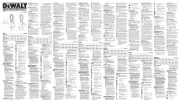
23 Mei 2025

18 Mei 2023

6 Mei 2023

5 Mei 2023

11 April 2023

6 April 2023

31 Maart 2023

8 Maart 2023

4 Maart 2023

27 Februari 2023
Handleiding Zaklamp
- Neff
- Silvercrest
- Sanyo
- Tracer
- Ferm
- Varta
- BEKO
- 4K5
- GoGEN
- Topeak
- SureFire
- CEL-TEC
- Graphite
- GP
- Rocktrail
Nieuwste handleidingen voor Zaklamp
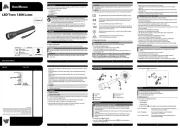
16 Juli 2025
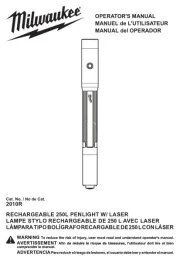
15 Juli 2025
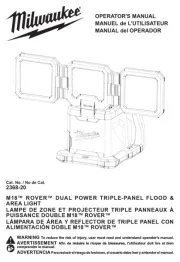
14 Juli 2025
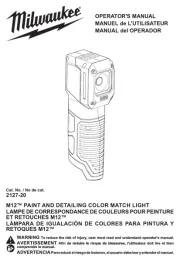
14 Juli 2025
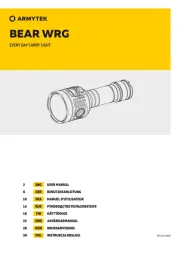
14 Juli 2025
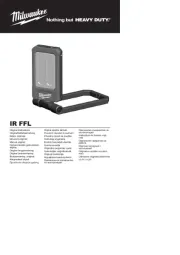
14 Juli 2025
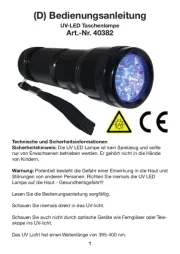
10 Juli 2025
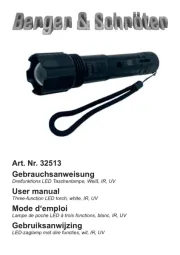
5 Juli 2025
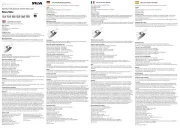
4 Juli 2025
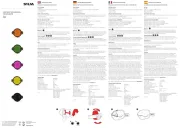
4 Juli 2025